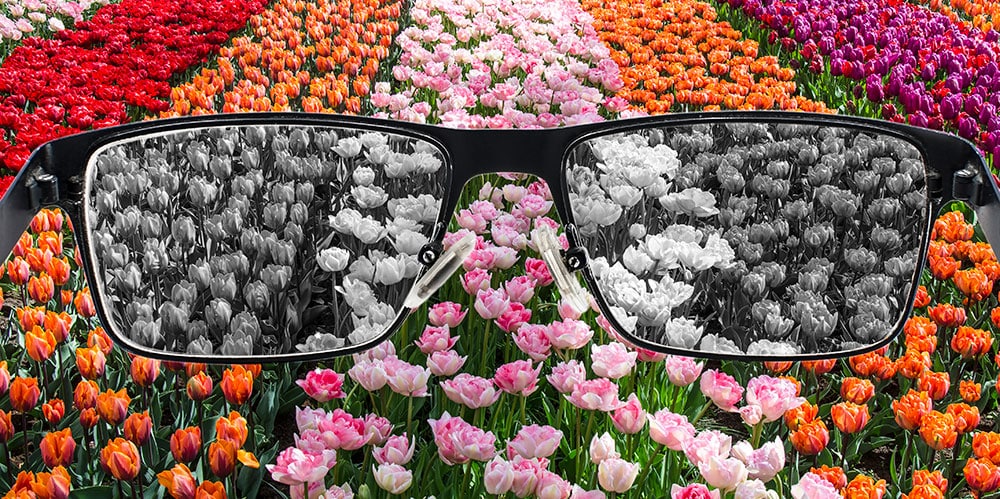What does color blind look like? For those of us who can see, it’s hard to imagine what it must be like to not be able to see color. But for those with color blindness, that’s exactly what they experience.
Color blindness is a condition where someone is unable to see certain colors, or sees them in a different way than people with normal vision. The most common type of color blindness is red-green colorblindness, where people have trouble distinguishing between these two colors. But there are other types of color blindness as well, including blue-yellow and total colorblindness.
There are a lot of misconceptions about what it means to be colorblind. People often think that colorblind people see the world in black and white, but that’s not actually true. While there are some people who are completely unable to see any color at all, most people with color blindness can still see some colors – just not as vividly or as clearly as someone with normal vision.
And contrary to popular belief, being colorblind doesn’t mean you can’t tell the difference between red and green – it just means that you might have a harder time doing so.
So what does it really look like to be colorblind? Well, it depends on the type of color blindness you have.
There are three main types of color blindness: protanomaly (red-green), deuteranomaly (green-yellow), and tritanomaly (blue-yellow). People with protanomaly tend to have difficulty distinguishing between red and green, while those with deuteranomaly have trouble differentiating between green and yellow. Tritanomaly is the rarest form of color blindness, and affects your ability to see blue and yellow.
No matter which type of color blindness you have, though, all colors will appear muted compared to someone with normal vision.
If you’re curious about what the world looks like through the eyes of someone with color blindness, there are plenty of resources online that can give you a better idea. There are even some apps that simulate different types of color blindness, so you can get a sense of how it affects your ability to see colors.
How Color Blind People See the World
What Does a Color Blind Person See?
A color blind person sees a limited range of colors, or no colors at all. The most common form of color blindness is called “red-green” color blindness, where red and green are seen as the same color. Other forms of color blindness include “blue-yellow” color blindness and “total” color blindness.
What Colors Do You Not See If You are Color Blind?
There are different types of color blindness, but the most common type is called red-green colorblindness. People with this type of color blindness have trouble distinguishing between red and green. Other colors may also be affected, but red and green are usually the hardest to tell apart.

Credit: assileye.com
Color Blind Test
If you’re not sure if you’re colorblind, there are a few ways to test for it. The most common way is the Ishihara Color Blindness Test, which uses a series of colored dots to see if you can identify certain colors. If you can’t, then you may be colorblind.
There are other tests out there as well, but the Ishihara is the most commonly used. So if you think you might be colorblind, go ahead and take a test!
Color Blind Simulator
There are a lot of different colorblindness simulators available online, but they all basically work the same way. By taking a normal image and desaturating it, or removing the color information, you can get an idea of what it might look like to someone who is colorblind. This can be a useful tool for designers to see how their designs will look to someone with a color vision deficiency, and it can also be fun for anyone curious about what the world looks like through someone else’s eyes.
What Does Color Blind Mean
What does color blind mean?
The term “color blind” is used to describe a person who cannot see certain colors, or whose vision for certain colors is reduced. There are different types of color blindness, depending on which colors are affected.
The most common type is red-green color blindness, where people have difficulty distinguishing between these two colors. Other types of color blindness include blue-yellow color blindness and total color blindness. People with colorblindness can still see colors, but they may not be able to distinguish between all the different shades.
For example, a person with red-green colorblindness might not be able to tell the difference between green and yellow.
There are many causes of color blindness, including genetic factors and exposure to certain chemicals. It is estimated that about 8 percent of men and 0.5 percent of women are affected by some form of colorblindness.
While there is no cure for this condition, special glasses or contact lenses can help some people with certain types of colorblindness to improve their ability to see colors.
Conclusion
Most people are familiar with the common idea of color blindness, which is the inability to see certain colors. However, there is a lot more to it than that. There are different types of colorblindness, and each one affects people in different ways.
Some people may not be able to see any colors at all, while others may only have trouble with certain colors. The most common type of colorblindness is red-green color blindness, which makes it difficult to distinguish between these two colors. Other types of colorblindness include blue-yellow color blindness and complete color blindness.
People with these conditions often have trouble seeing clearly in low light or at night. Colorblindness is usually genetic, but it can also be caused by certain medical conditions or medications. There is no cure for colorblindness, but there are treatments that can help make it easier to live with.
